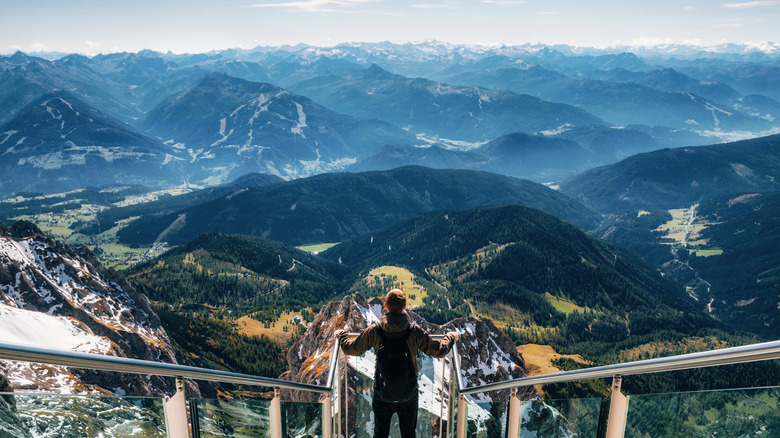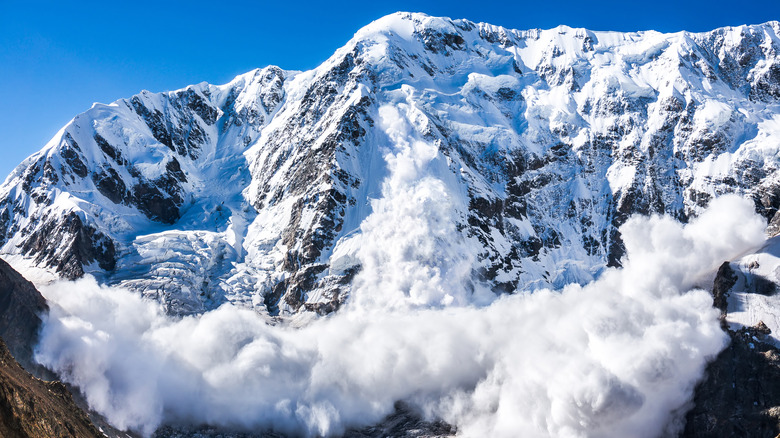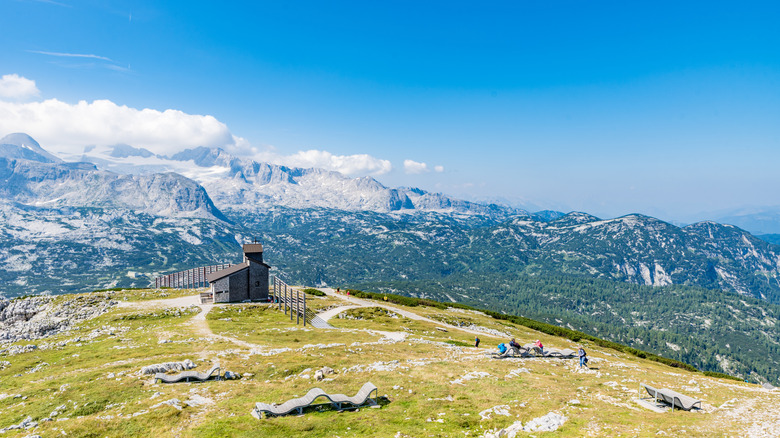Grim Details About What Happened In The Dachstein Hiking Disaster
No matter how well-worn the hiking trial, or how many precautions you take, there's always a risk when trekking forth into mountains and forests. Weather conditions can change, mistakes can happen, injuries can occur, and a host of other factors can render an otherwise easy and simple journey a tragic, even life-ending nightmare. This is especially true if you're with children, and that much more so if you're with 10 children. This is exactly what happened back in 1954 at Hoher Dachstein mountain in the Austrian Alps when three teachers and all 10 children vanished on a hike as a snowstorm settled into the area.
A story known more in Austria than elsewhere — and described on German-language sites more than elsewhere — the Dachstein Hiking Disaster has taken on a special, precautionary, memorialized place in the region's gorgeous, rugged mountainscape. The basic story is simple: Three young teachers and a group of teenage students in 1954 set out to hike to Dachstein Krippenstein, now part of the UNESCO World Heritage region of Salzkammergut. Conditions for the hike seemed good, but that quickly changed as rain turned to fog and then to snow. Workers along the trail told the teachers and students to turn around and head back, but they didn't. This lapse in judgment is just one tragic detail of the many that paint the whole Dachstein Hiking Catastrophe as preventable and make it stand out even today.
Multiple chances to turn back
According to German-language site Die Bergrettung Obertraun (via Google Translate), the tragic events of 1954 began with a larger group of students traveling to the region of Salzkammergut on a field trip on Palm Sunday, of all poignant days. Some students wanted to go on a hike to the area of Krippenstein, and come Maundy Thursday a group of three teachers set out at 6:00 a.m. from Obertraun Federal Sports School with 10 students, all aged 14 to 16. Though the weather was nice at the time, it started raining by 9:30 a.m. Forecasts weren't good, and the school's director had warned them to call off the hike before they set out. When the group reached a checkpoint at Schönbergalm, they were warned again to turn around. Once again, they ignored advice.
The weather worsened as the group proceeded further along the trail. Fog swept in, visibility shrank, temperatures plummeted, and rain turned to snow. The group came across workers building the region's cable car, and these workers once again advised the group to turn around. This was the third and last time that such advice was ignored. By night the group hadn't returned, and rescue operations began shortly thereafter. The weather was so bad, and navigating the region so confusing, that even the rescue workers got lost and had to stay indoors overnight. While it's possible that the rescue workers could have found the lost group before they died, the group's lack of proper protective clothing made their chances of survival minimal.
A modest, mountainside memorial
Rescue workers found their first clues regarding the whereabouts of the teachers and students in the form of a newspaper and empty bread bag. By all accounts it seemed like the group had finally turned around to head back to Schönbergalm checkpoint — albeit too late. It was only when snow started to melt three days after rescue operations began that the dead started to emerge. In the end, it took over 400 rescue workers to find the lost group, and the final two dead weren't found until 43 days later.
Nearly 10 feet of snow had consumed the region and completely buried the teachers and students. Their faces showed precisely how much they'd suffered in their final hours and minutes. This might have been the end of the tale if not for another tragic facet to this story: a camera found on site. The victims wound up unwittingly documenting their march uphill amid the disaster.
At present, the modest Heilbronn Chapel marks the general area of the catastrophe at Krippenstein (pictured above). For the dead, it serves as a memorial. For the living, it serves as a reminder to not take chances when heading into such a mountainous region, especially when it comes to weather, protective clothing, planning for emergencies and unplanned contingencies, and heeding wise advice.
Here's our list of other scary hiking stories that will make you want to stay indoors.


